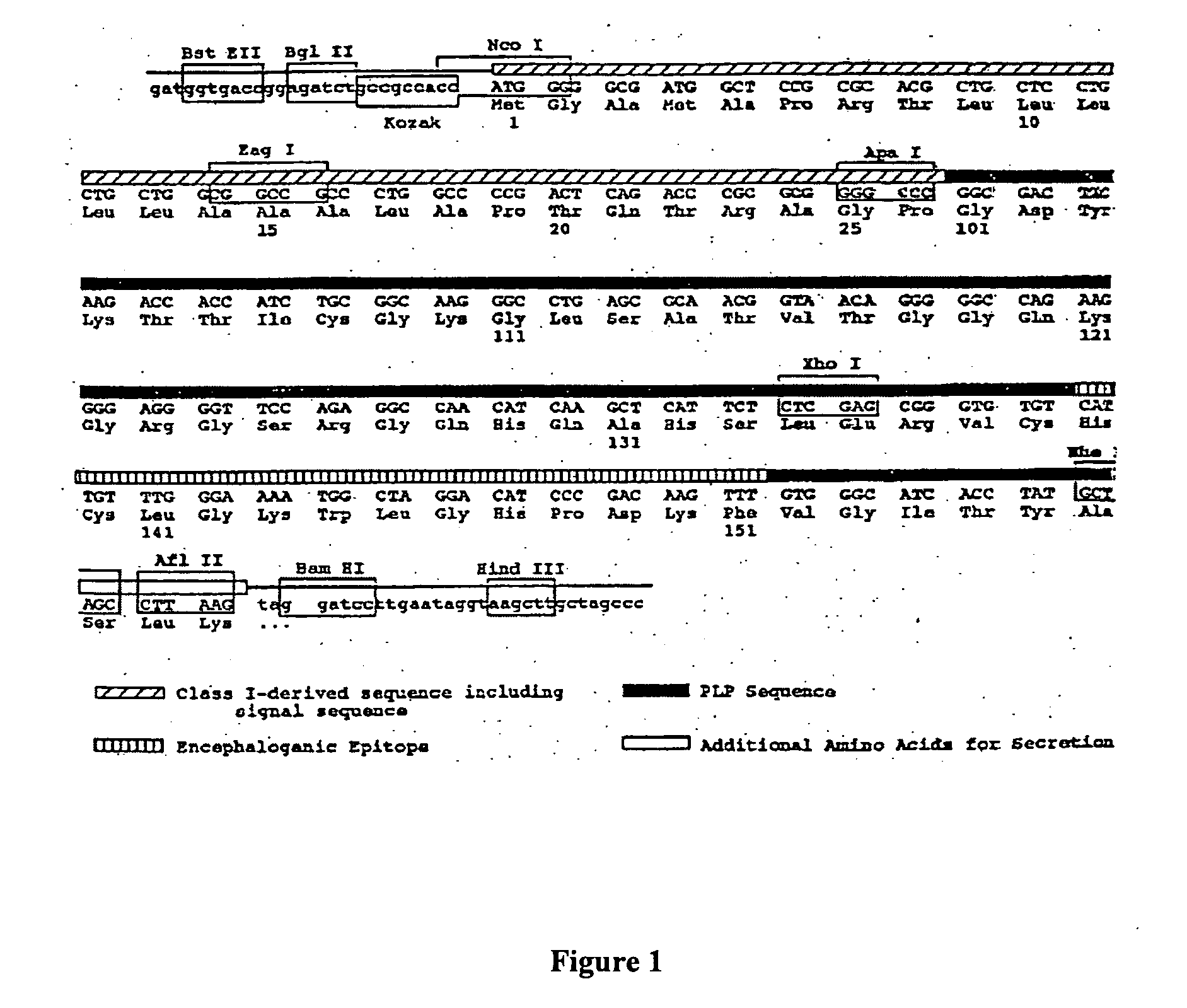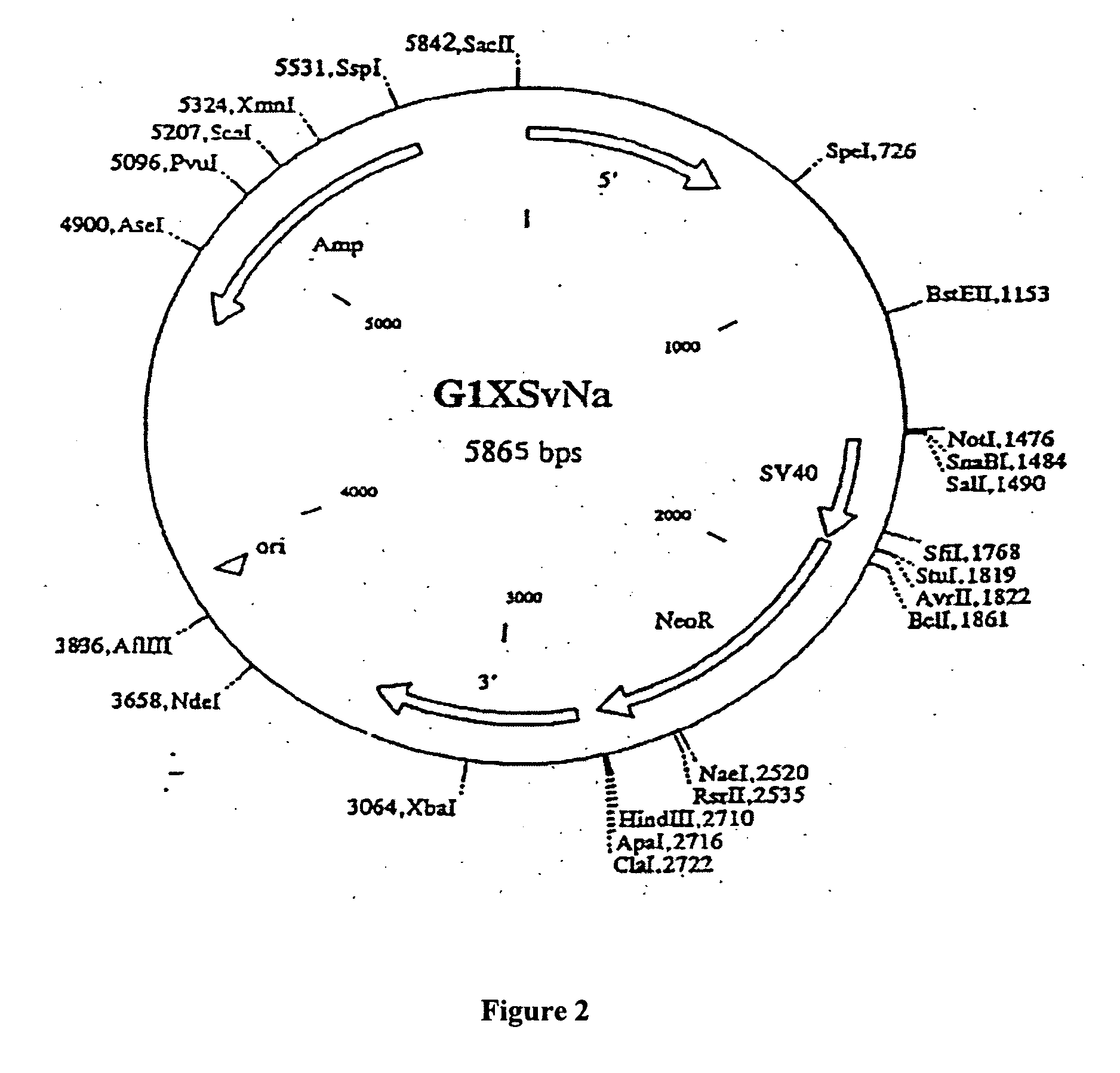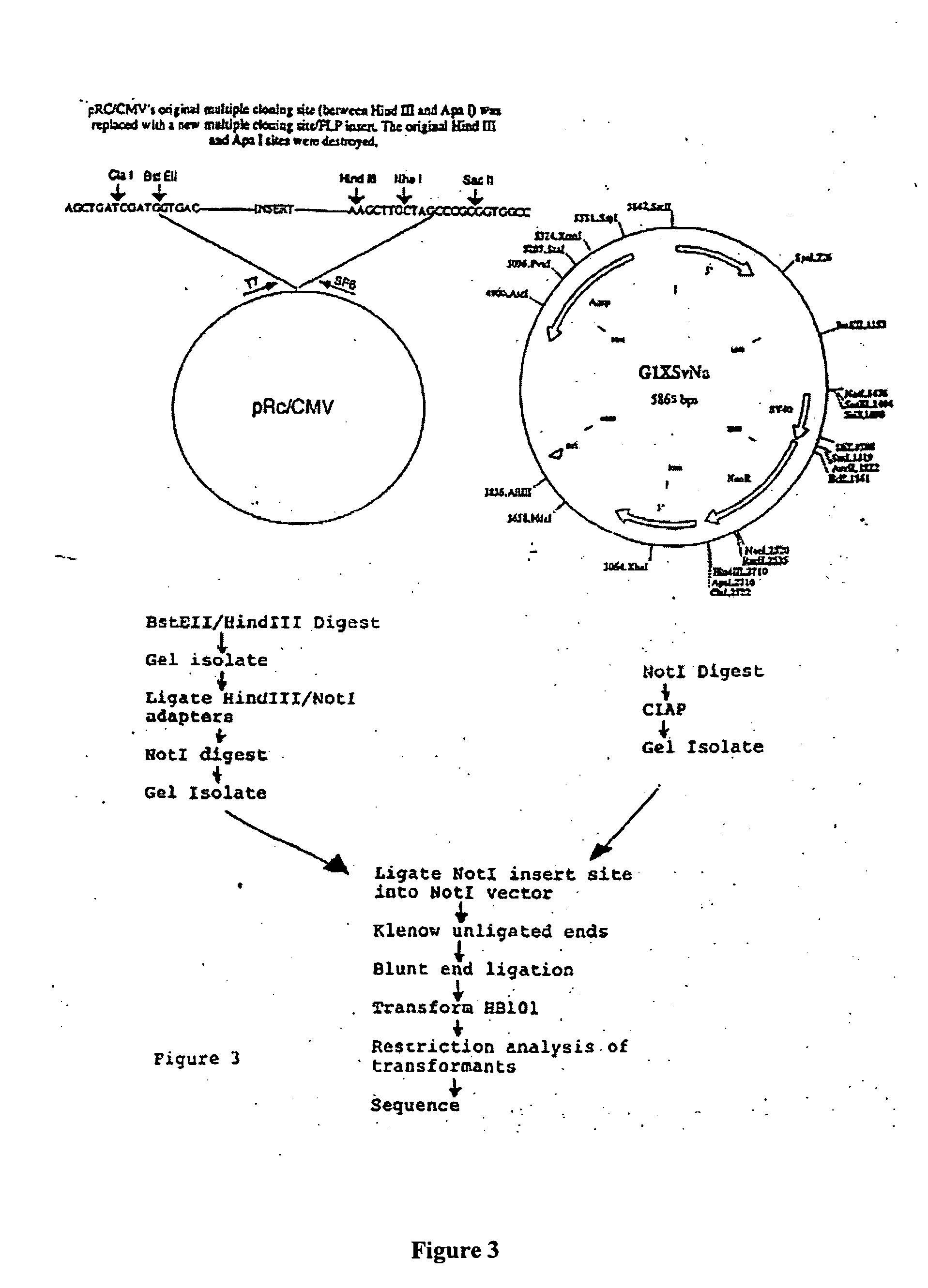Construction and use of genes encoding pathogenic epitopes for treatment of autoimmune disease
a technology of pathogenic epitopes and gene expression, applied in the field of immunotherapy, can solve the problems of paralysis, sensory deficits and visual problems, drugs currently used to treat autoimmune diseases have only been partially effective, and the effect of only being effective for a limited tim
- Summary
- Abstract
- Description
- Claims
- Application Information
AI Technical Summary
Problems solved by technology
Method used
Image
Examples
example 1
Design and Construction of the PLP Gene
[0081] In SJL / J mice, the encephalogenic epitope of PLP comprises amino acids 139-151. [Takahashi, N., et al., Cell, 42:139-148 (1985); Sakai, K., et al., J. Neuroimmunol., 19:21-32 (1988); Kono, D. H., et al., J. Exp. Med., 168:213-227 (1998).] The vector is designed such that the gene product encoded by it is constitutively secreted from mammalian cells, such as, but not limited to fibroblasts, stem cells, peripheral blood monocytes, and lymphocytes. Since the complete PLP protein is a hydrophobic transmembrane protein [Diehl, H-J.,et al, PNAS U.S.A., 83:9807-9811 (1986)], with the encephalogenic epitope being extracellular, a plasmid encoding amino acids 101-157 and additional amino acids required for secretion was constructed. See FIG. 1, SEQ ID NOs.: 1-6. This sequence is hydrophilic in character.
1. Oligonucleotide Synthesis and Construction of the PLP pRc / CMV Vector
[0082] Oligonucleotides can be synthesized manually, e.g., by the pho...
example 2
In Vitro Expression of the PLP Protein
[0093] The following experiments were performed in order to demonstrate that the PLP vector encodes a protein which is constitutively secreted. Specifically, the mRNA levels of PLP were evaluated in SJL fibroblast cells transfected with the pRc / CMV-PLP vector, and mRNA and protein levels of PLP were evaluated in SJL fibroblast cells transfected with the pGlPLPSvNa vector.
1. Establishment of Fibroblast Cultures
[0094] Syngeneic fibroblasts (derived from SJL mice) were obtained from Dr. G. Dreskler (Uniformed Services University, Bethesda, Md.) and expanded at 37° C. incubation using DMEM growth medium, supplemented with 5% glutamine and 10% FCS. The cells were harvested and frozen at 1×107 cells per vial, and aliquots were quality control tested for mycoplasma, sterility and viability.
2. Retroviral Constructs
[0095] A recombinant retroviral vector in which exogenous genes are inserted into a retroviral vector was constructed. The cloning st...
example 3
In Vitro Effects of the PLP Protein
[0125] Critical to the success of this invention in the embodiment of this example is the ability to deliver genetically manipulated fibroblasts to patients so that the cells survive in sufficient numbers and for long periods of time, in order that continuous secreted antigen may be provided to the patient.
[0126] To assess the fate of transplanted transduced fibroblasts, SJL fibroblasts transduced with retrovirus encoding B-galactosidase were injected subcutaneously between the shoulders of SJL mice. All mice were female mice of the SJL strain between 6-8 weeks old and were obtained from Jackson Labs. Animals were housed and maintained according to NIH guidelines (National Research Council, 1986). These fibroblasts survived in large numbers after 60 days. Fibroblasts injected into the footpad or intramuscularly could not be detected at eight days.
1. In Vivo Fate B-gal Transduced Cells
[0127] The activity of the B-Galactosidase marker was evalu...
PUM
| Property | Measurement | Unit |
|---|---|---|
| volume | aaaaa | aaaaa |
| temperature | aaaaa | aaaaa |
| temperature | aaaaa | aaaaa |
Abstract
Description
Claims
Application Information
 Login to View More
Login to View More - R&D
- Intellectual Property
- Life Sciences
- Materials
- Tech Scout
- Unparalleled Data Quality
- Higher Quality Content
- 60% Fewer Hallucinations
Browse by: Latest US Patents, China's latest patents, Technical Efficacy Thesaurus, Application Domain, Technology Topic, Popular Technical Reports.
© 2025 PatSnap. All rights reserved.Legal|Privacy policy|Modern Slavery Act Transparency Statement|Sitemap|About US| Contact US: help@patsnap.com



